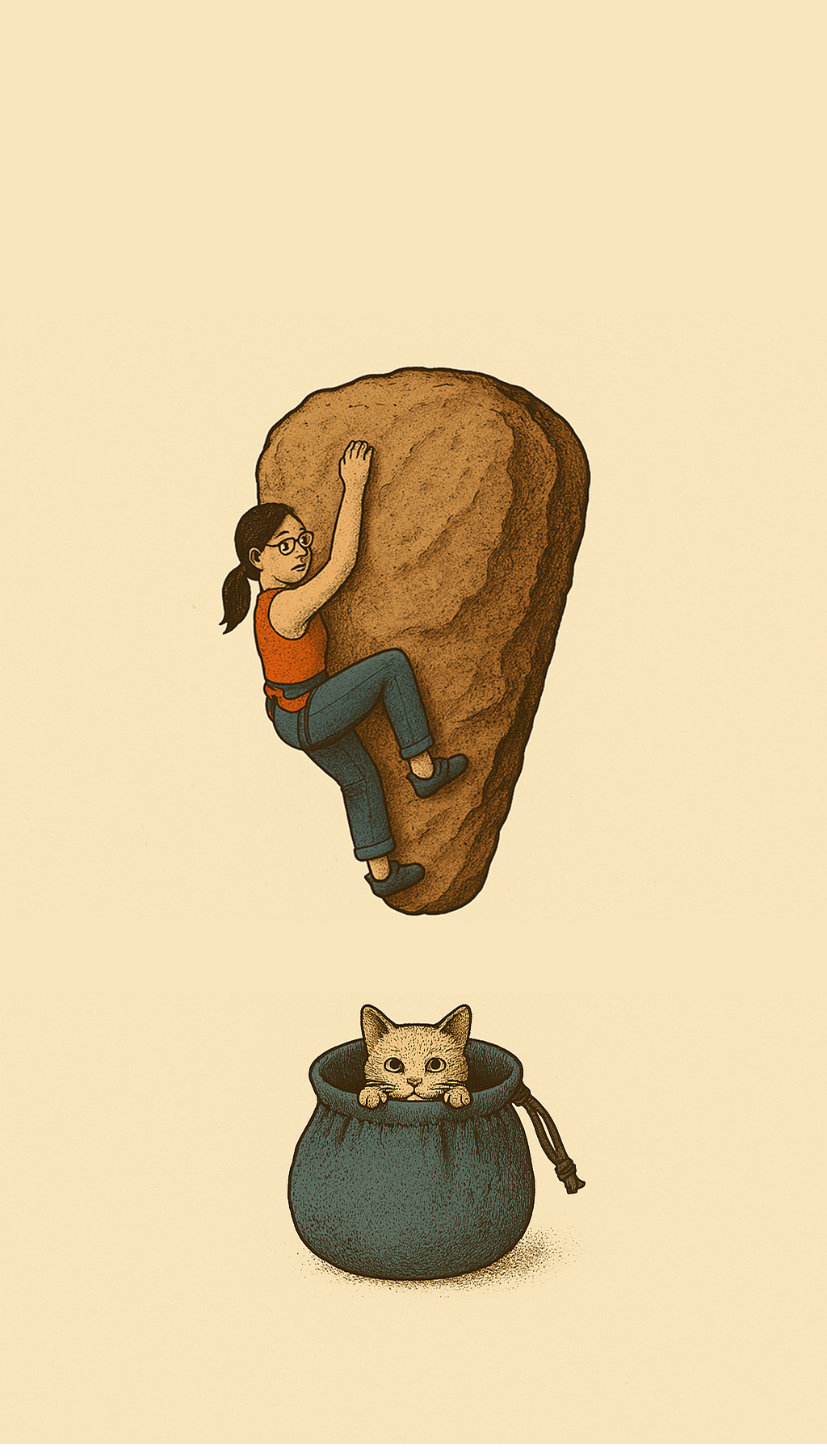The Slipping Point: Calf Raises, Counting, and Clarity at the Point of “Failure”
A 1 minute on-the-wall dynamic calf raise quest - perfect for your next slab project, active rest session, or mental training day
Purpose:
To train subtle balance sensitivity, proprioceptive awareness, and emotional regulation under micro-instability. This drill safely exposes climbers to fear and failure cues—specifically the moment just before and during a foot slip—within a controlled environment.
Setup
Choose Your Foothold Carefully
Look for a low-profile, directional foothold such as a small sloper, shallow smear, or the edge of a large volume.
It should feel stable and sticky enough when proper force is applied—yet sensitive to directional pressure and vulnerable to smearing misalignment.
Avoid anything sharp, spiky, or overly painful.
Position a Nearby Hand Jug
Find a jug or very secure hold nearby at a comfortable height that allows you to maintain relaxed, upright balance on the wall.
Ideally, use it for gentle guidance, not full weight-bearing.
Establish Position
Step onto the chosen foothold and settle your body weight over it, using your hand as little as possible.
Find a static position that feels relatively effortless, grounded, and calm—a “home base” for balance.
Make sure it’s safe enough to perform repeated heel raises without falling or hitting nearby holds.
Execution
Begin Calf Raises (Dynamic Phase)
Raise and lower your heel on the foothold in a steady, even rhythm—fast enough to challenge your balance, but not so fast you lose awareness.
This is not strength training—it’s deliberate instability training.
Choose a range of motion and pace that:
Feels safe to repeat,
Slightly disturbs your balance or position each rep,
Causes minor slips or shifts—hips sagging, pivots, micro foot slides.
Your Only Quest: Count Your Reps
With each heel raise/lower cycle, count aloud or mentally: “One… Two… Three…”
Keep going until the inevitable moment when your foot actually slips off the hold or irrecoverably shifts.
That rep number is your result.
Key Rule
The drill ends the moment your foot slips. Not when you're tired. Not when you're bored. When your foot actually slips.
This moment is the point of study. You must be fully alert to notice it—to truly feel it happen.
Purposeful Framing
This is not a test of how many reps you can do.
This is a test of how awake you can be to the edge of balance and failure.
You are training not to prevent slips—but to meet them with curiosity and composure.
